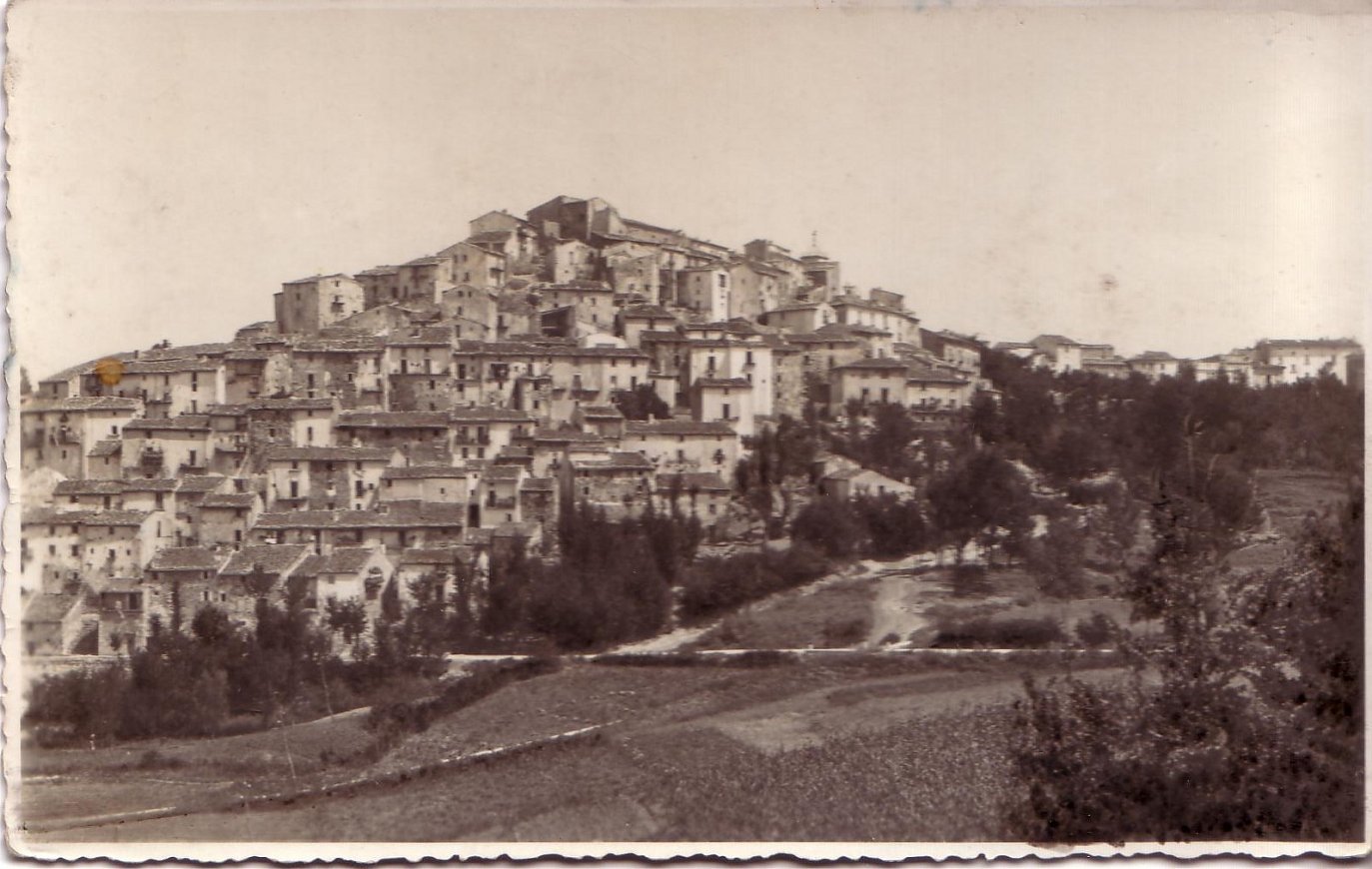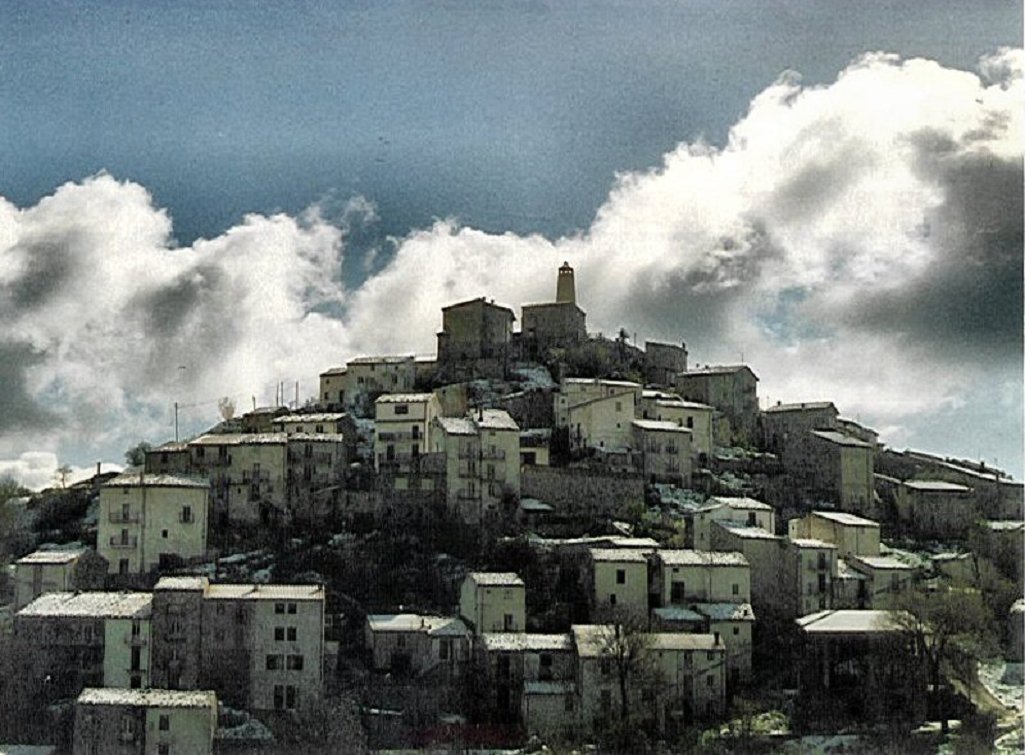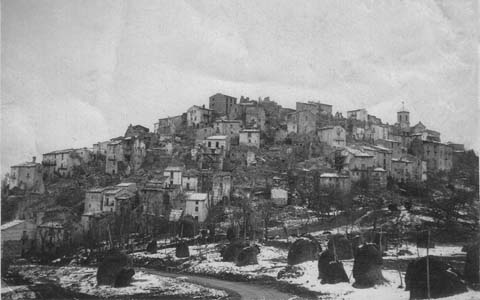
Le Coste - Allora ed ora / Le Coste - Then and Now
circa 1920
2004
(Photo courtesy of Pierluigi Marsigli)
|
Cari amici Oggi vi spedisco un altro "confronto" fra due foto scattate a distanza di almeno 80 anni. E' il quartiere dell Coste. La prima è quella attuale, scattata l'anno scorso da Pierluigi Marsigli; La seconda è una vecchia fotografia scattata intorno agli anni 20 o almeno prima dei bombardamenti dell'ultima guerra. La differenza è eclatante, un insieme di tante case allora a e qualche casa, pure disabitata, adesso. Si vede ancora il palazzo baronale, che per un periodo non lontano è stato anche un carcere. Ora lì sulle macerie di questo palazzo, bombardato e raso al suolo, che era di epoca medioevale, c'è la torre , il monumento alle vittime civili . La popolazione di Torricella , all'epoca della foto, variava intorno ai 5.000 abitanti e il quartiere delle Coste era la zona più popolosa del paese. Era abitato per lo più da contadini e da artigiani. La maggior parte delle case aveva una stalla nella zona a piano terra, per l'asino o per qualche pecora o capretta. Da qui la mattina presto partivano per i campi e all'imbrunire rientravano con l'asino carico di "fascette" o di "jerva medica". Davanti l'asinello e dietro il padrone attaccato alla coda, che si faceva tirare su per i vicoletti. Come tutti i paesi antichi il nucleo più antico di Torricella è stato costruito su un basamento roccioso. Esso dava sicurezza e si poteva costruire senza fondazioni. Inoltre "le Coste" sono in posizione verso meridione, così si è sempre esposti al sole , indispensabile per superare gli inverni freddi e nevosi. Il basamento delle Coste è di calcare, la stessa roccia della Majella, una roccia molto dura e compatta . Quando si va a Torricella è sempre suggestivo fare una passeggiata per i vicoli delle Coste, fra scalette e salitelle, oppure affacciarsi alla terrazza della "piazzetta", sotto la torre, dove si gode un panorama a 360°, dal monte Porrara al monte Amaro, da Gurdiagrele al mare, dai monti del Molise ai monti Pizzi. Ciao, Antonio Piccoli |
Dear friends, Today I’m sending you another comparison between two photos of the same place taken at least 80 years apart. It is the zone of the "Coste". The first is the present day, taken last year by Pierluigi Marsigli. The second is an old photo taken in about the 1920’s, or at least before the bombing of the Second World War. The difference is extraordinary, a settlement of so many houses then - and just a few, mainly uninhabited ones, now. You can still see the baronial palace that not so long ago was also used as a prison. There, on the rubble of this palace that was of medieval origin, now bombed and razed to the ground, is the tower, the monument to civilian victims. At the time of the photo, the population of Torricella was about 5,000 inhabitants and the "Coste" quarter was the most densely populated part of the village. It was mostly inhabited by peasants and craftsmen. Most of the houses had a stable on the ground floor, for the donkey or for some sheep or goats. Early in the mornings, they left from here to go to the fields and returned at dusk with the donkey laden with "fascette", (bundles of twigs) or with "jerva medica" (medicinal herbs). The donkey led the way in front and the master came behind attached to the tail so he could be pulled up the little alleyways. As in all old villages, the oldest part of Torricella, the nucleus, was built on a rocky base. This provided safety and the houses could be built without foundations. The “Coste”, moreover, are in a southerly position, so they’re always exposed to the sun, indispensable for surviving the winters' cold and snow. The base of the "Coste" is composed of limestone, the same rock as the Majella, a very hard, compact rock. When one goes to Torricella it is always enchanting to go for a walk along the alleyways of the "Coste", amongst the steep stairways and little uphill paths, or else to go and look out from the terrace of the “piazzetta” (small square), beneath the tower, where there is a 360 degree panorama, from Mount Porrara to Mount Amaro, from Guardiagrele to the sea, from the mountains of Molise to the Pizzi mountains. Ciao, Antonio Piccoli |
| Translation courtesy of Marion Apley Porreca | |
| Cartolina delle Coste circa 1910-20 (cura di Germana Piccone) |
Photo postcard of Le Coste c.1910-20 (courtesy of Germana Piccone) |
|
|
|
| The handwritten note says "Prima la guerra" (Before the war). | |
And this, sadly, is Le Coste at the end of the war.
